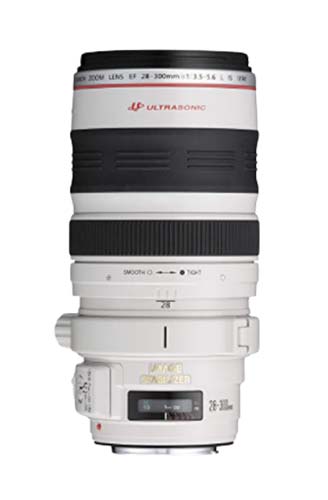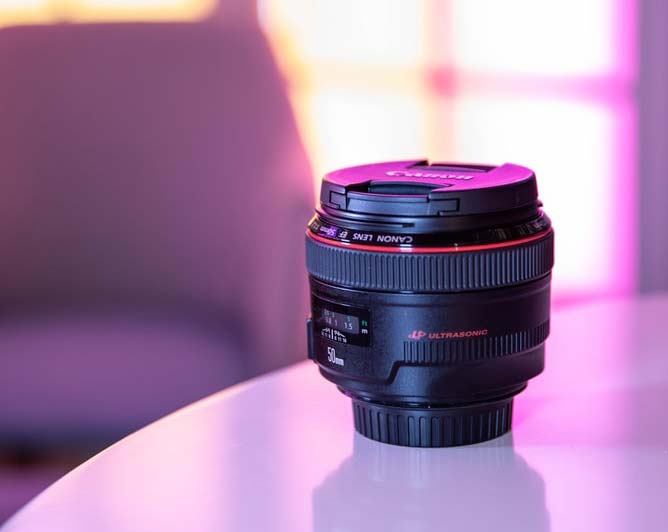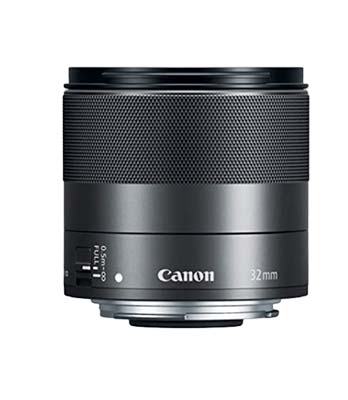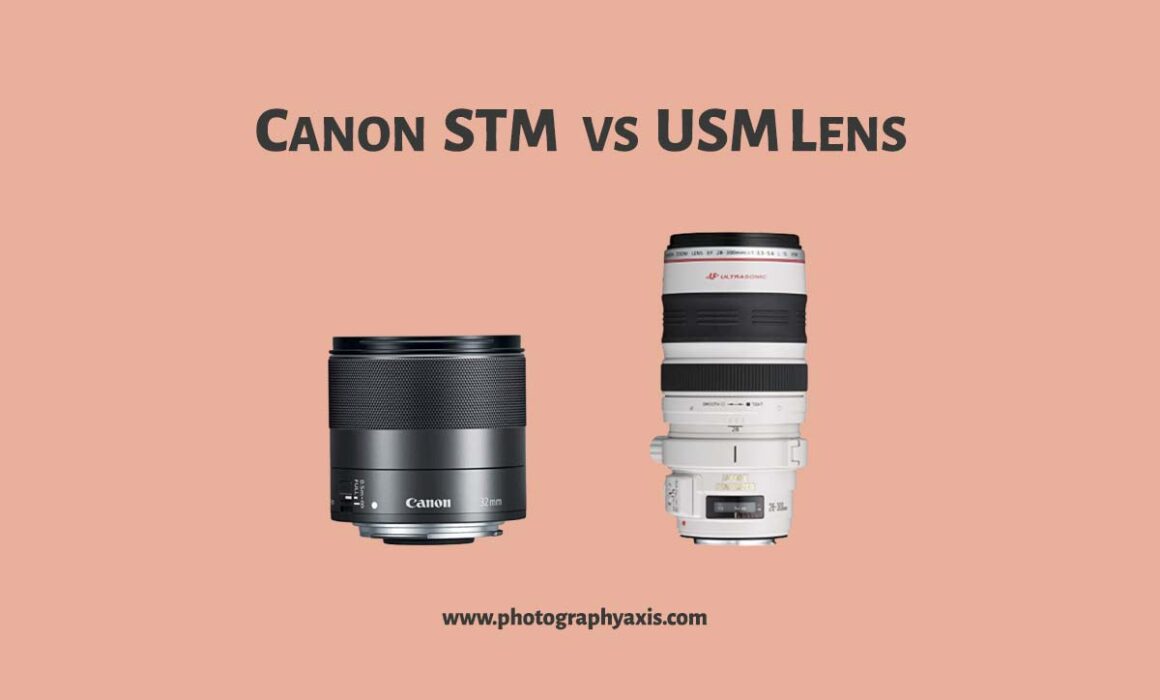Canon STM vs USM Lens- Differences & Which is Best?
STM and USM are the two popular types of autofocus systems in Canon lenses. These two types of lenses are available for both Canon DSLR and Mirrorless cameras. If you are planning to buy a Canon lens for your camera body, you may get confused with these two lens variants. Don’t worry. I will help you select the best lens that suits your needs. Let us have a look at the key differences between STM vs USM lens.


STM vs USM – The Key Differences
1. Difference in the Acronyms

Canon USM Lens
The STM is the acronym for Stepper Motor, and USM stands for Ultrasonic Motor.
A Canon STM lens use a stepper motor for autofocusing. The Canon USM lens uses an Ultrasonic motor for autofocusing.
2. Noise Factor

Canon USM Lens 50mm
The USM lenses from Canon produce slight noise during the autofocusing. Canon has solved this noise issue with the help of the stepper motor in their STM lenses.
The noise in the USM lens is due to the quick movement of lens elements inside. So, if you are looking for a lens that doesn’t make much noise during autofocusing, then go for an STM lens.
3. Manual Focus Factor
There are times when you use the manual focus option in your lens. The STM lens uses a “Focus by wire system.” When you try to rotate the manual focus ring in an STM lens, a signal is sent to the motor to move the focus elements. So, the focusing elements are moved indirectly. So, there will be a lag during manual focusing.
But, in the case of a USM lens, the movement of focus rings will move the lens elements inside directly. It allows a full-time manual focus without causing any motor damages.
4. Cost Factor

Cost is an essential factor when it comes to lens selection. Canon USM lenses are costlier than the STM ones. So, if your budget is low, then better to go for the STM lens.
5. Speed

USM lenses from Canon are faster in focusing than their STM counterparts. So, they are faster when compared to the STM lenses. So, if you are looking for a lens with a fast autofocus feature, go for the USM lens.
If there are two subjects in the scene that are at a distance apart and you want to switch the focus from the subject in the front to the one in the back. The USM lens will help achieve a fast focus lock through the phase detection system.
I prefer to use USM lenses for wildlife photography due to this feature. The quick focus is an essential requirement for wildlife and bird photography.
6. For Photography

Brown winged Kingfisher Photographed using Canon 500mm f4 L IS II USM Lens
If you are planning to invest in professional grade lenses for photography, I strongly recommend going for the Canon USM lenses. The fast focusing feature of the USM lens makes it more photographer friendly. Most USM lenses come in the Canon L series, which ensures that the lens uses high quality glass. Thus, the image quality will be better.
If you are into action photography, sports photography, wildlife photography, or bird photography, then the USM lens will be the best choice.
7. For Video

Canon STM Lens
If you are using the camera to capture videos, then you will be recording the audio also. The USM lenses will make noise when trying to focus on the subject. This noise will get picked up by the microphone in the camera/ external microphone (if the external mic is very close to the camera). Thus, you will end up with low quality audio for the video. So, if you are using a USM lens for video, it is better to use an external microphone kept at a distance from the camera. It will help to avoid the motor noise pick up during autofocusing.
The STM lenses will ensure no noise generated during the video capture, and there won’t be any lens noise pick up in the audio. STM lenses produce less jarring and smooth videos.
STM Vs USM – Comparison Table
| Sl No | USM Lens | STM Lens |
|---|---|---|
| 1 | Costly | Less Costly |
| 2 | Noisy | Quiet |
| 3 | Uses Ultrasonic Motor | Uses Stepper Motor |
| 4 | Super Fast Auto Focus Speed | Fast Auto Focus Speed |
| 5 | Good For Photography | Good For Video |
| 6 | High Quality Build | Average Quality Build |
| 7 | Used in Most of the Canon L series Lenses | Used in Lower Price range Lenses |
| 8 | Best suited for Professionals | Suited for Amateurs |
| 9 | Most of the USM lenses are weather sealed | No Weather Sealing |
| 10 | Heavy | Lighter |
Canon USM Lens Examples
Mirrorless Lenses
👉🏼 Canon RF 70-200mm f/4L IS USM Lens
👉🏼 Canon RF 100-500mm f/4.5-7.1L IS USM Lens
👉🏼 Canon RF 24-70mm f/2.8L IS USM Lens
DSLR Lenses
👉🏼 Canon EF 70-200mm f/2.8L IS III USM Lens
👉🏼 Canon EF 500mm f/4 IS II Lens
👉🏼 Canon EF 50mm f/1.4 USM Lens
Canon STM Lens Examples 😎
Mirrorless Lenses
👉🏼 Canon RF 50mm f/1.8 STM Lens
👉🏼 Canon RF 85mm f/2 IS STM Lens
👉🏼 Canon RF 600mm f/11 IS STM Lens
DSLR Lenses
👉🏼 Canon EF 40mm f/2.8 STM Lens
👉🏼 Canon EF 24-105mm f/3.5-5.6 IS STM Lens
👉🏼 Canon EF-S 55-250mm f/4-5.6 IS STM Lens
Conclusion
So, both STM and USM lenses have got its pros and cons. The choice between the two will mainly depend on your end use (video or photography) and the budget. If you are a professional photographer, then go for a USM lens. If you plan to capture videos, then invest in an STM lens. The quiet AF and the smooth focus will capture noise-free videos.

